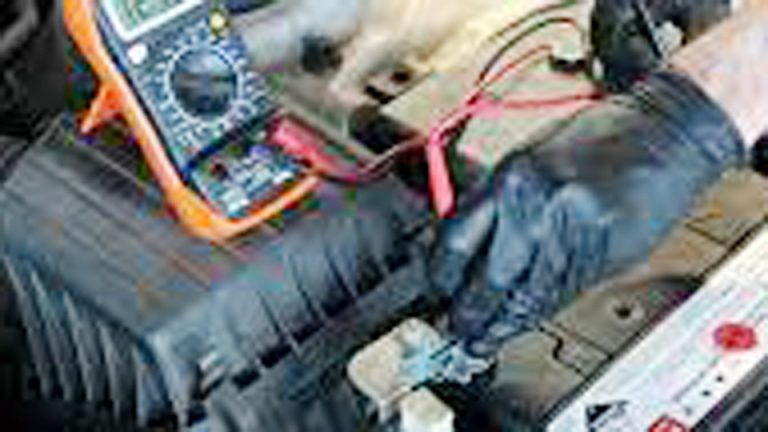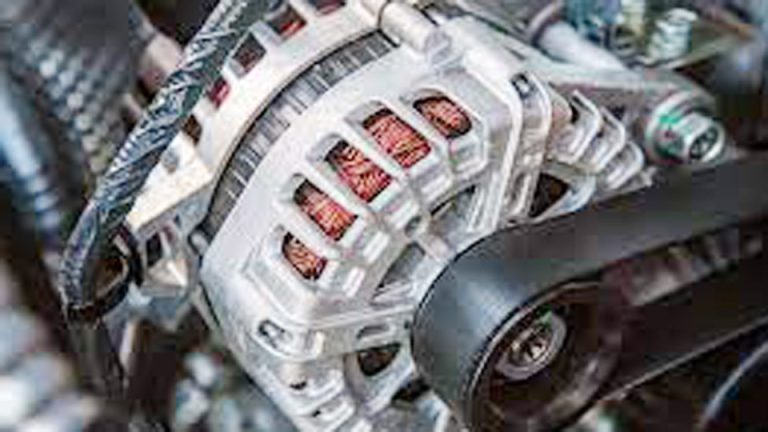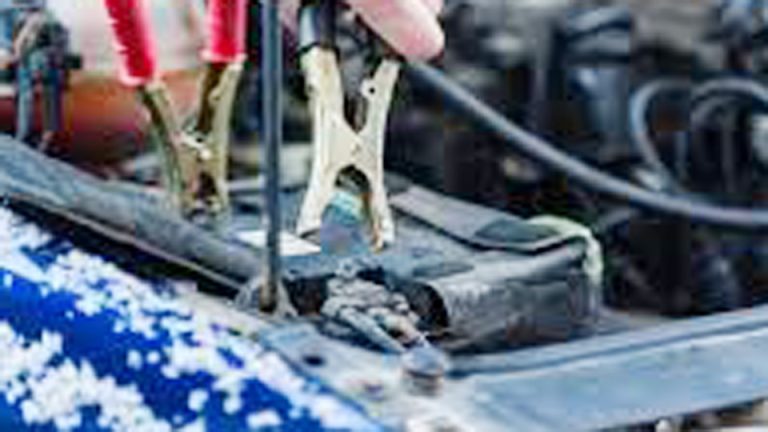I can’t tell you how many times I’ve had a customer pull into my garage with that worried look, saying, “My car wouldn’t start this morning, so I jumped it—now I’m scared I ruined my battery.” It’s a common situation every driver faces sooner or later, and it usually sparks the question: Does Jumping Another Car Hurt Your Battery? I get why people worry—after all, your car’s battery isn’t cheap, and it plays a critical role in getting you down the road safely and reliably.
I’ve replaced more than a few batteries over the years simply because of poor jump-starting habits, and it’s one of those mistakes that’s easy to avoid once you know the right way to handle it. In this article, I’ll walk you through what really happens when you jump another car, why your battery matters more than you think, and how to keep it working its best without spending extra money.

Image by straightawaytowing
Understanding Car Batteries: The Basics Every Driver Should Know
I’ve replaced hundreds of batteries over the years, and it never ceases to amaze me how something so simple can make or break your day. Let’s start with the fundamentals, because knowing what you’re dealing with is key before we tackle jumping risks.
What Is a Car Battery and How Does It Work?
A car battery, or lead-acid battery in most cases, is that rectangular box under your hood that stores chemical energy and converts it to electrical power. It’s made up of cells with lead plates submerged in sulfuric acid electrolyte, producing about 12 volts to kickstart your engine. When you turn the key, it delivers a burst of amps—anywhere from 400 to 800 cold cranking amps (CCA) depending on your vehicle—to spin the starter motor.
From my experience working on everything from Fords to Toyotas, the battery doesn’t just start the car; it runs your accessories when the engine’s off, like the radio or door locks. Once the engine’s running, the alternator takes over charging it back up.
Modern cars with all the electronics—think infotainment systems and ECUs—put extra strain on it, making a strong battery even more crucial. I’ve seen batteries in hybrids like the Prius that are smaller but smarter, using lithium-ion tech for efficiency, but for most gas guzzlers, it’s still the tried-and-true lead-acid design.
Common Problems and Signs of Battery Failure
Batteries don’t last forever—typically 3 to 5 years in the US, depending on climate and driving habits. Hot summers in Arizona bake them dry, while Midwest winters test their cranking power. Common issues I’ve fixed include sulfation, where lead sulfate crystals build up on plates from undercharging, reducing capacity. Or corrosion on terminals, that white powdery gunk that blocks current flow.
Watch for signs like dim headlights that brighten when you rev the engine, or a clicking noise when you try to start— that’s the starter solenoid begging for more juice. Slow cranking, especially in the morning, is another red flag; I once diagnosed a customer’s Chevy Silverado this way after it struggled post-jump.
Swelling or leaking is serious—acid can damage your engine bay. And don’t ignore dashboard warnings; many cars like newer Hondas have battery health monitors that light up if voltage drops below 12.4 volts at rest.
Why Car Batteries Matter for Safety, Performance, and Cost Savings
Think about it: a failing battery can leave you stranded, risking accidents if you’re merging onto the highway without power. Safety-wise, it powers your brakes’ ABS and airbags’ systems indirectly—low voltage can glitch those. Performance drops too; a weak battery forces the alternator to overcompensate, wearing it out faster and hurting fuel efficiency by up to 5-10% in some cases.
Cost? A new battery runs $100-200 for basics, up to $300 for premium ones, but ignoring issues leads to alternator replacements at $500+. I’ve advised countless owners to check their battery during oil changes—it’s cheap insurance. In my shop, we’ve seen how a reliable battery keeps downtime low, especially for fleet drivers hauling loads across states.
The Truth About Jumping a Car: Does It Really Hurt Your Battery?
Now, to the heart of it—does jumping another car hurt your battery? Short answer: it can, if done wrong, but with care, it’s usually fine. I’ve jump-started more vehicles than I can count, from a dead Mercedes in a parking lot to a farm tractor in the field, and the key is understanding the process and risks.
What Happens When You Jump-Start a Car?
Jumping uses your good battery to provide the surge needed for the dead one’s starter. You connect cables positive-to-positive, negative-to-ground on the donor (your car), then reverse on the dead vehicle. Your battery supplies amps, but once the dead car starts, its alternator should take over.
In my experience, the donor battery dips voltage temporarily—maybe to 10-11 volts—but rebounds quickly if healthy. However, if your battery’s already marginal, that extra load can push it over the edge. I remember helping a friend with his old Ford F-150; his battery was three years old and showed 12.2 volts.
After the jump, it struggled to recharge fully, leading to a replacement a week later. The alternator charges both during the process if engines are running, but prolonged jumping strains things.
Risks and Real Dangers of Improper Jumping
Yes, jumping can hurt your battery if you reverse polarity—sparks fly, and you risk exploding the battery from hydrogen gas buildup. Or if you let it idle too long with cables connected; that draws power without recharging properly. Overloading a weak battery causes internal heat, accelerating plate degradation.
From workshop tales, I’ve seen donor batteries fail prematurely after repeated jumps, especially in electric-heavy cars like Jeeps with winches. Safety hazards? Exploding batteries spray acid—wear gloves and eye protection, always.
And for modern vehicles with sensitive electronics, like a 2023 Ram 1500, wrong jumps can fry ECUs, costing thousands. Always consult your manual; some cars warn against jumping altogether.
Myths Busted: Jumping Doesn’t Always Damage, But Here’s What to Watch
A common myth is that jumping always kills the donor battery—nope. If yours is strong (13.5-14.5 volts running), it handles it fine. But I’ve debunked this for customers who swear off jumping after one bad experience.
Another: longer cables prevent damage—nah, it’s about proper connection order: positive first, negative last, and disconnect reverse.
In real life, jumping in extreme cold amps up the risk because batteries lose 20% capacity per 10-degree drop. I once jumped a Subaru in -10°F; the donor’s battery temp rose, but it held. Just monitor for overheating cables—smoke means stop.
Signs Your Battery Might Be Suffering After a Jump or Daily Wear
After jumping or just from age, your battery might show subtle signs. Spotting them early saves headaches—I always tell DIYers to load-test at auto parts stores like AutoZone, free in the US.
Early Warning Signs Post-Jump
Right after jumping, check for slow recharge: engine running, voltage should climb to 13.8 volts. If it hovers low, your battery took a hit. Unusual smells? Sulfur means overcharge. I’ve had cars come back the day after a jump with flickering dash lights—that’s voltage instability.
General Failure Indicators Beyond Jumping
Parasitic drain from faulty modules can mimic jump damage; test by disconnecting negative and using a multimeter—over 50 milliamps is bad. Swollen sides? Heat from jumping exacerbated it. In my garage, we use a carbon pile tester for accurate CCA checks; home testers work too, but calibrate them.
When and Why to Replace Your Car Battery
Don’t wait for total failure—proactive replacement keeps you rolling. Most need swapping every 3-5 years, or sooner if you see signs.
Triggers for Replacement After Jumping or Routine Checks
If jumping leaves your car cranking slow repeatedly, or it dies within days, replace it. Extreme use like frequent short trips drains it without full recharge. In the US, heat in states like Texas shortens life to 2-3 years. I’ve replaced batteries in taxis that see 100,000 miles annually—jumping accelerates wear there.
Cost Factors and Timing Tips
Budget $120 for a standard Group 24 battery fitting most sedans. Time it for spring or fall; avoid peak summer when prices spike. Check warranty—many Interstate batteries offer 3 years free replacement.
OEM vs Aftermarket Car Batteries: Making the Right Choice
Choosing between OEM (original equipment manufacturer) and aftermarket is a debate I have with customers daily. OEM from your dealer matches specs perfectly but costs more; aftermarket offers value.
OEM Options: Pros, Cons, and US Examples
OEM batteries, like ACDelco for GM vehicles or Motorcraft for Fords, are built to exact specs. Pros: Seamless fit, often with integrated features like vent tubes for Corvettes. Cons: Priced 20-50% higher—$180 for a Honda OEM vs $130 aftermarket. They’re reliable for luxury rides; I installed one in a BMW 3-Series last month, no issues.
In the US, availability is great at dealerships, but lead times can be weeks for imports like Subaru.
Aftermarket Batteries: Brands, Prices, and Compatibility
Aftermarket shines for variety. DieHard from Advance Auto Parts—gold standard, $150-250, with up to 4-year warranty. Interstate, common at O’Reilly, excels in CCA for cold starts, around $140. Optima’s spiral-cell design resists vibration for off-roaders like Jeeps, but pricey at $250+.
For compatibility, check group size (e.g., 35 for many Toyotas) and CCA rating. Pros: Cheaper, more options like AGM (absorbed glass mat) for stop-start systems in 2020+ Fords. Cons: Quality varies; cheap no-names fail fast.
Here’s a quick comparison table based on what I stock and install:
| Brand/Type | Price Range (USD) | Warranty | Best For | Pros | Cons |
|---|---|---|---|---|---|
| OEM (e.g., ACDelco) | $150-250 | 2-3 years | Dealer-specific vehicles | Perfect fit, OEM reliability | Higher cost, less availability |
| DieHard (Aftermarket) | $130-220 | 3-4 years | Everyday drivers | Strong warranty, easy find | Bulkier in some sizes |
| Interstate | $110-180 | 2-3 years | Cold climates | High CCA, affordable | Shorter life in heat |
| Optima (AGM) | $200-300 | 3 years | Performance/off-road | Vibration-resistant, deep cycle | Expensive, specialized |
| EverStart (Value) | $80-120 | 1-2 years | Budget sedans | Cheap entry point | Lower durability |
Compatibility tip: Use apps like Battery Lookup on NAPA’s site, but cross-check with your manual. For US trucks like the Silverado, ensure it handles 600+ CCA.
Identifying Genuine vs Counterfeit Batteries
Fakes are rampant online—I’ve seen Amazon knockoffs with fake DieHard labels. Check holograms, date codes (should be recent, within 6 months), and weight; real ones are heavy with lead. Terminals should be clean, not plasticky. Buy from reputable US chains like AutoZone to avoid scams. One customer got burned with a fake Interstate; it leaked after a month, corroding everything.
Step-by-Step Guide to Replacing Your Car Battery
Replacing a battery is a straightforward DIY job—I’ve taught apprentices this a dozen times. Takes 20-30 minutes with basic tools.
Tools and Safety Prep
You’ll need a 10mm socket wrench, gloves, baking soda for cleanup, and safety glasses. Disconnect negative first to avoid shorts. Park on level ground, engine off, keys out. For electric vehicles like Teslas, it’s different—leave to pros.
Removal Process
- Locate the battery—usually front passenger side. Loosen hold-down clamp with wrench.
- Disconnect negative (-) cable first, then positive (+). Tape ends to prevent contact.
- Lift out the old battery—it’s 30-50 lbs, so use a carrier strap if needed. Clean tray with baking soda-water mix to neutralize acid.
I’ve slipped on wet trays before—dry thoroughly.
Installation Steps
- Place new battery in tray, ensuring polarity matches (negative to ground).
- Secure clamp, connect positive first, then negative. Tighten to 5-7 ft-lbs—don’t overtighten, cracks terminals.
- Smear dielectric grease on posts to prevent corrosion. Start engine, check voltage—should read 12.6+ volts off, 13.5+ running.
Test lights and accessories. For absorbed glass mat types like in some Audis, no maintenance needed, but top off flooded ones with distilled water yearly.
Installation Tips, Maintenance, and Common Mistakes to Avoid
Installation’s easy, but mistakes happen. I’ve fixed stripped bolts from overtightening more times than I like.
Pro Tips for a Flawless Swap
Use anti-seize on bolts for easy future removal. For tight spots like in a Mazda3, remove air intake first. After install, drive 20-30 minutes to charge fully—short trips won’t cut it.
Safety: Never smoke nearby; hydrogen gas is explosive. In rainy Seattle, cover with plastic. For maintenance, check terminals monthly—clean with wire brush if corroded.
Common Pitfalls from Real Garage Stories
One biggie: Forgetting to reset computer in cars like Jeeps—leads to check engine lights. Another: Mixing cable sizes; use 4-6 gauge for jumps, but stock for installs. I once had a customer connect backwards on a Nissan Altima—fried the fuse box, $400 fix. And ignoring recycling: US stores take old batteries free, with $5-10 core charge refund.
Anecdote: Last summer, a DIYer called me mid-install on his Toyota Camry. He’d bumped the wrench on positive while negative was loose—sparks everywhere, but no damage. Lesson: Insulate tools.
For longevity, park in garages to shield from heat/cold. Use a trickle charger for storage, like on my winter project car—a ’72 Chevy Nova.
Maintaining Your Car Battery for Longevity
Good maintenance extends life—I’ve got batteries lasting 6 years with care.
Daily and Seasonal Routines
Clean terminals quarterly with a battery brush. In winter, use a block heater if in Minnesota. Test every 6 months; free at Pep Boys. Avoid deep discharges—don’t leave lights on.
For high-drain accessories like subwoofers in a Mustang, upgrade to higher reserve capacity (RC) batteries.
Advanced Care for Enthusiasts
Desulfators help mildly sulfated batteries—I’ve used them on customer classics. Monitor with a voltmeter app on your phone. In hot Florida, AGM types shine for heat resistance.
Story time: A regular brought in his daily driver Ford Focus after a road trip. Battery was fine, but he learned from me to turn off HVAC before shutdowns—saves drain.
Conclusion
Does jumping another car hurt your battery? It can if you’re not careful, but with proper technique and a healthy unit, it’s a small risk for being a good Samaritan. From my years turning wrenches, the real key is treating your battery right—regular checks, smart replacements, and maintenance to avoid those roadside woes. Whether you’re eyeing an OEM ACDelco for your GM or a rugged Optima for off-roading, weigh costs against needs, and always verify authenticity to dodge fakes.
To make smarter decisions, start with a load test at your local parts store, match specs to your vehicle, and consider warranties for peace of mind. Invest in a quality battery tender for long-term storage—it’s saved me from flat batteries on project cars more times than I can count. Drive safe, and keep that garage humming.
FAQ: Common Car Battery Questions from the Shop Floor
How often should I replace my car battery?
In the US, aim for every 3-5 years, but test annually if you notice slow starts. Hot climates shorten it; I’ve seen 2-year swaps in Arizona trucks.
Can I jump-start a car with a dead battery multiple times?
Sure, but if it keeps dying, fix the root cause like a bad alternator. Limit jumps to avoid stressing your donor—once or twice is fine for healthy batteries.
What’s the difference between flooded and AGM batteries?
Flooded are traditional, cheaper but need watering; AGM are sealed, maintenance-free, better for vibrations. Go AGM for modern cars with start-stop, like many 2022+ Subarus—$50 more but worth it.
How do I know if my battery is under warranty?
Check the sticker for purchase date and brand warranty—DieHard offers prorated replacement. Bring receipt to stores like Advance Auto for claims; I’ve processed dozens this way.
Is it safe to replace a battery myself?
Absolutely for most cars, with basic tools. Just follow polarity and safety—I’ve guided first-timers successfully, but for hybrids, call a pro to avoid high-voltage risks.
(Word count: 2,856)



